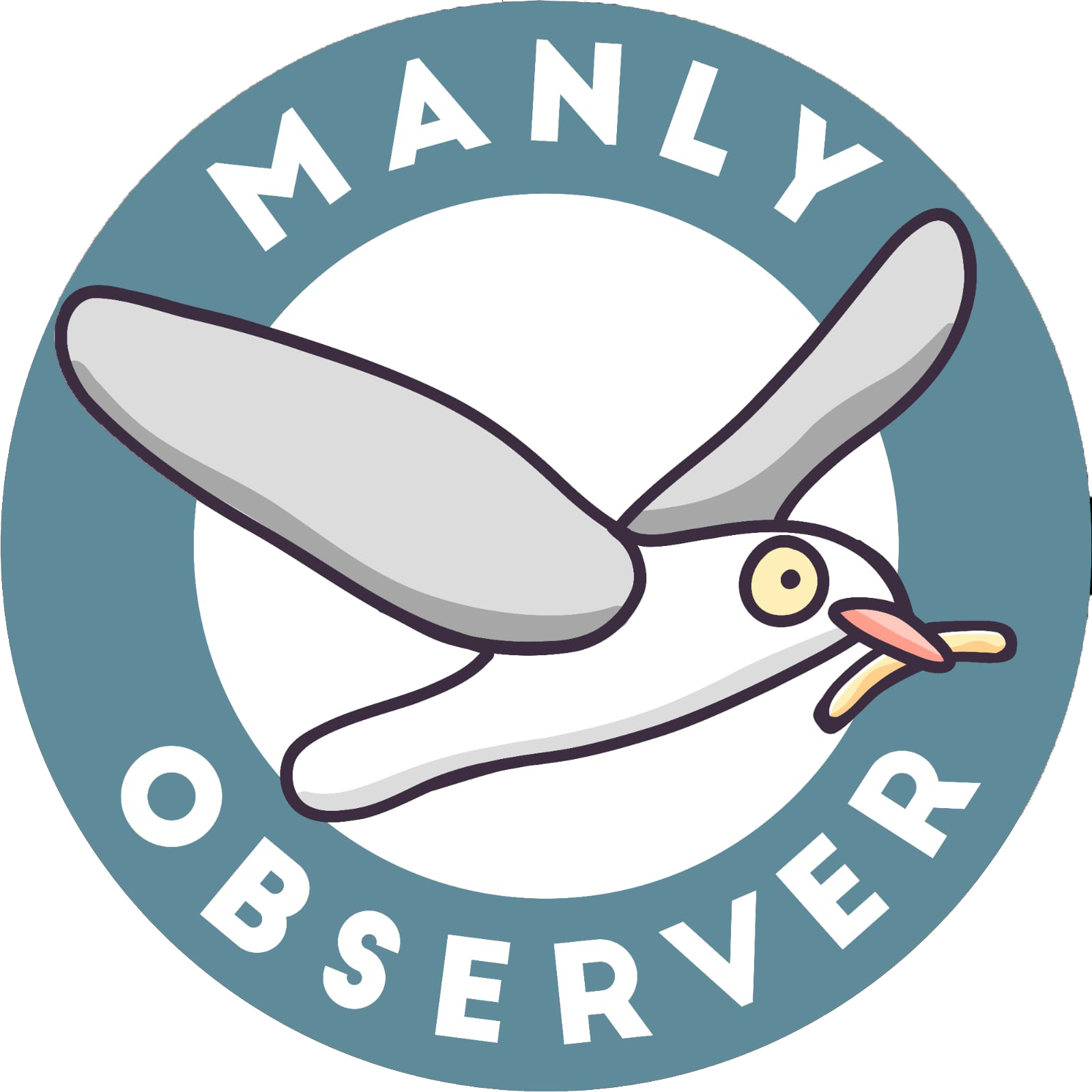The three-dimensional (3D) pedestrian crossings being trialled in Manly over the 2022-23 summer are now in place – three of them in close proximity at the seafront along South Steyne. However, they are receiving mixed reactions on social media, so Manly Observer spoke to the crossing installers to answer some questions.
Consisting of white rectangular strips sided with grey and black shading on a red base, the 3D crossings utilise an optical illusion which, when viewed from a certain angle, make the white panels appear to rise up from the road.
Two are installed at the interface between Wentworth St and South Steyne; the third is 120 metres south-east at the South Steyne junction with Victoria Parade.
These are the first to be trialled in NSW in a partnership between Northern Beaches Council and Transport for NSW (TfNSW), although, as Manly Observer has previously revealed, not the first in Australia, and internationally, they’ve been around awhile.
They were installed by Geveko Markings, a global road markings company with an office in Mona Vale (although originally founded in Sweden in 1924), which provided both the durable red paint base and the thermoplastic zebra stripes with grey and black ‘shadows’ that are melted onto the red-tinted road surface.
It is expected the 3D crossings makes approaching motorists more cautious and pedestrian-aware.
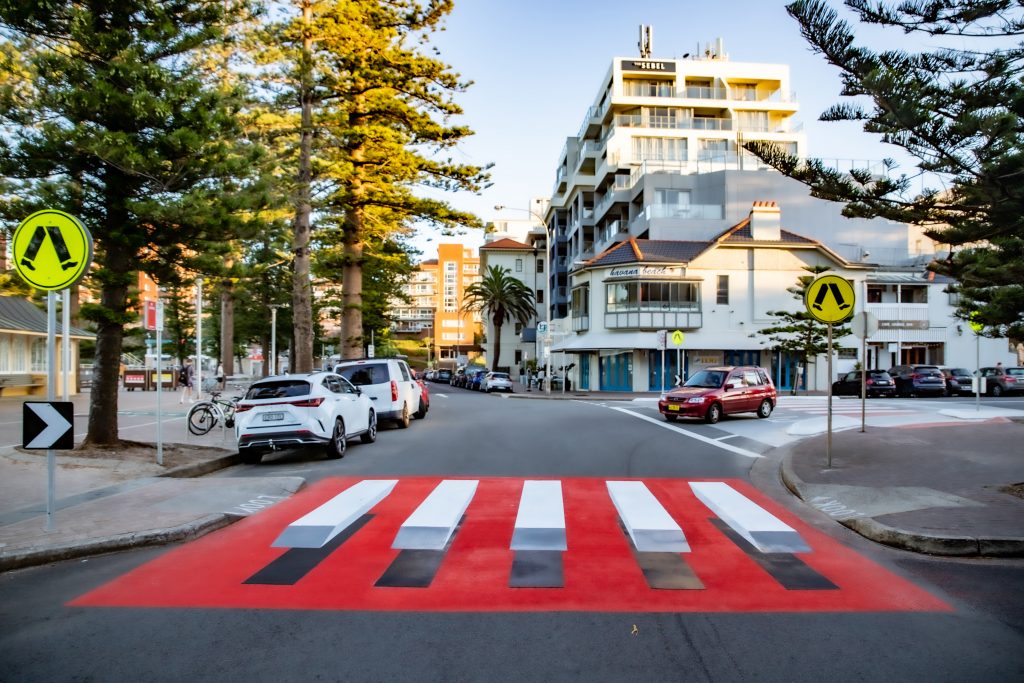
The crossings have received a thumbs-up from users we’ve surveyed, however, across social media they are generating confusion and polarising opinions of those who have not seen them in close proximity or walked upon the zebra stripes.
Manly Observer spoke to Ian Cocoran, Managing Director of Geveko Markings, to explain the purpose of the 3D crossings and, hopefully, resolve any lingering confusion.
Wear and tear
How long will the red base last (ie, not fade or wear away) under normal traffic and weather conditions?
“It’s impossible to give a “time based” figure as road markings should always be measured by traffic density. What I can tell you is that BASt P7 (which our PlastiRoute has achieved) means that the material has survived 4 million wheel passes in exactly the same spot with no to minimal deterioration.
“The PREMARK is certified to P6 level but the panels in Manly were formulated to be more hard wearing. Assuming 2000 vehicles per day go over the crossings we would expect to see a performance period of around 5 years plus.”
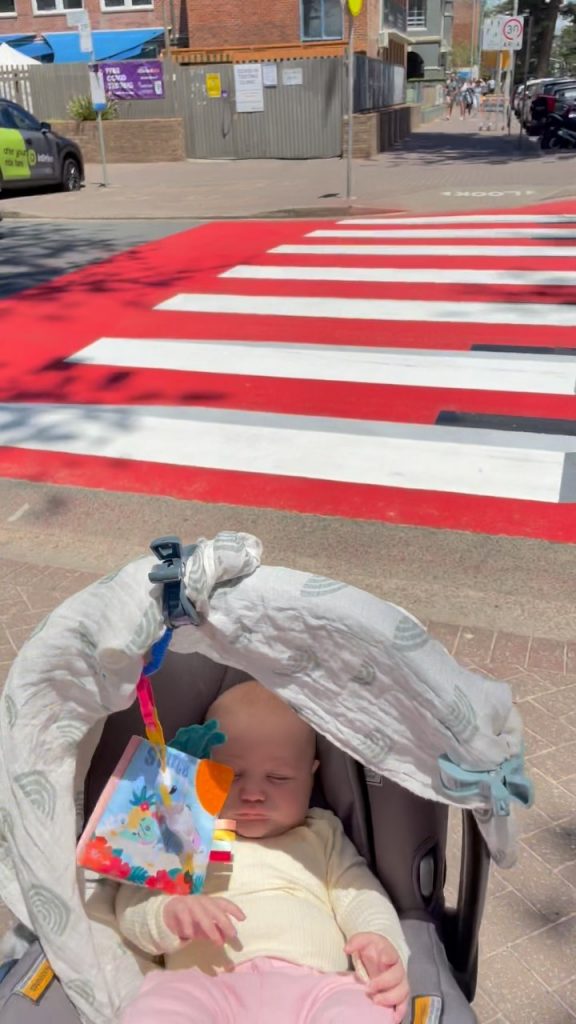
Will the crossings be more slippery in the rain for both pedestrians and car tyres?
“Not at all – the BASt accreditations clearly demonstrate that both materials far exceed the current Australian standard of 45BPN for road markings.”
Colours
Why was red chosen, instead of green or yellow?
“Green would clash with cycle paths and whereas yellow would have been an option, people normally associate red with danger and that tends to raise awareness. It also helps emphasise the shadows on the panels.”
Are colour-blind people less likely to see white on red instead of white on grey?
“I will defer to an optician on that one.”
Effects
Do the crossings cause people with balance issues (eg: Parkinson’s Disease) or visual impairment to feel dizzy when they walk upon them?
“Again, this is one for a qualified medical practitioner but there are many other pavements and horizontal pedestrian surfaces that are based on street art or paving patterns.”
Manly Observer also asked Northern Beaches Council about this issue. A spokesperson replied: “From a pedestrian perspective it will appear as a normal pedestrian crossing, with the northbound traffic seeing it as a normal crossing too.”
The 3D effect faces one direction; some people who’ve driven the opposite direction and not seen it are complaining that it doesn’t work. Why does it only face one way?
Ian said: “The crossing bars could be orientated so that they give an effect from both directions but it would dilute the impact in the direction of flow that is deemed the greater risk. Traffic approaching from the opposite side still get a very clear view of a bright and vivid crossing that is clearly delineated and easy to see.”
Council said: “The initial site assessment indicated that the main issue with speed was in a south bound direction and this is the direction of travel that will see the crossing in the three dimensions.”
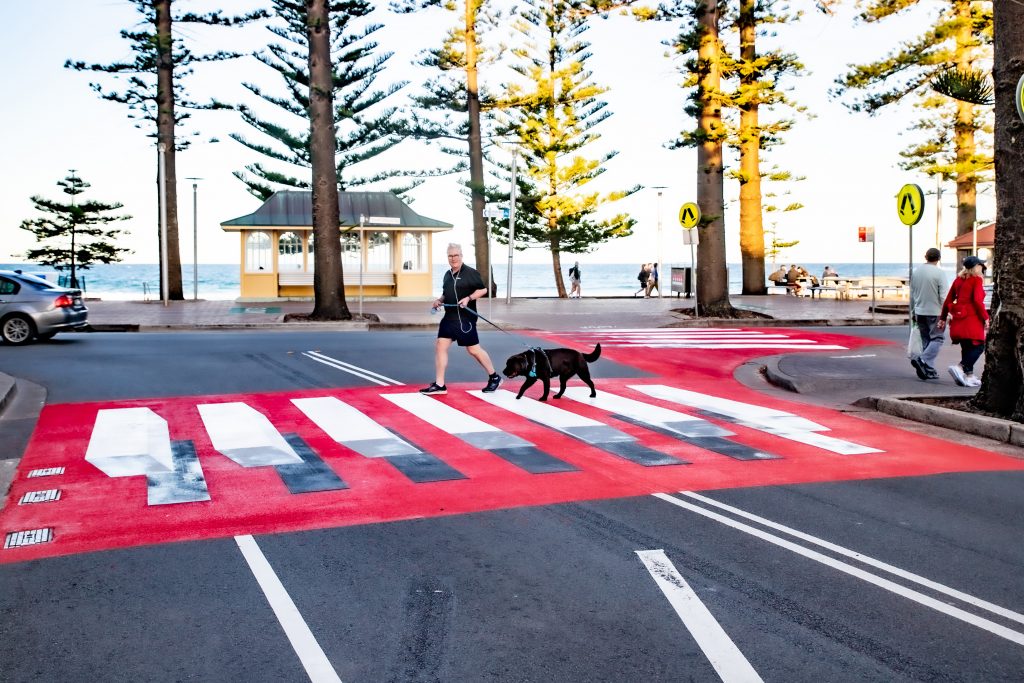
Legality
Do they comply with Australian pedestrian crossing regulations and standards?
Ian: “In terms of regulations and standards – there is no Federal standard, as each state has their own. The Manly crossings have been approved for use by TfNSW.”
Will pedestrians be more likely to stop on the crossings to pose for social media photos (ie, appearing to stand on ‘raised’ 3D platforms), risking traffic accidents?
“Quite possibly – Council have recognised this however and are deploying Rangers to monitor behaviour.”
Should Northern Beaches Council fix potholes or other road issues first before trialling a new crossing?
“That is a matter for the Council but our belief at Geveko is that Road Safety of any nature is paramount in terms of priority as it carries the highest risk in our daily lives. That is regardless of whether it’s potholes, crossings or replacing/upgrading existing and new road markings.”
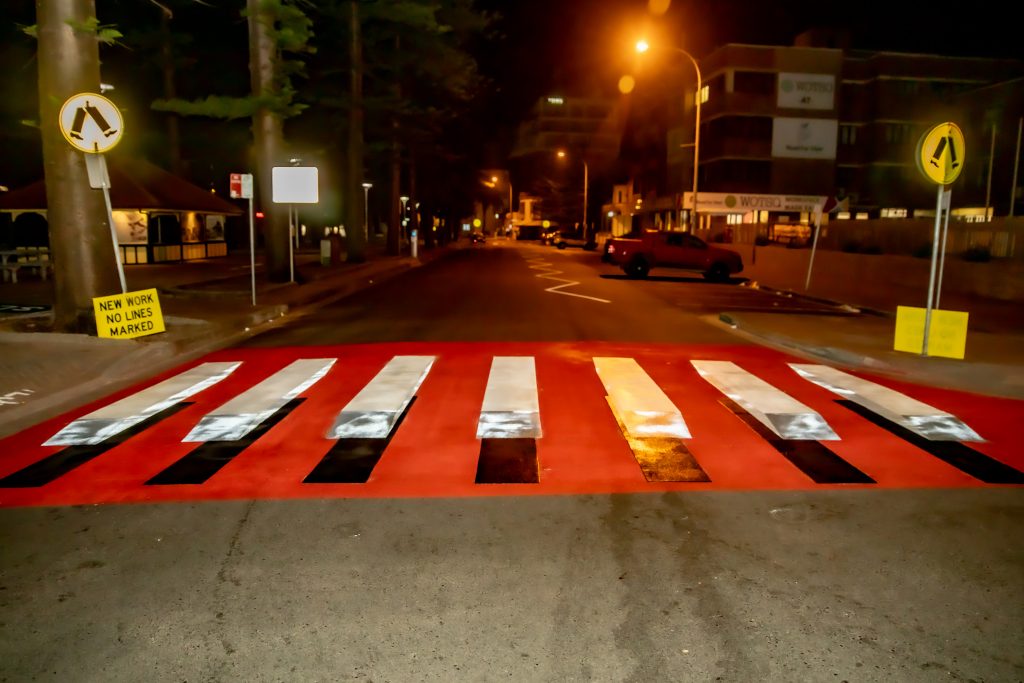
Cost
This is a local road and Council says it is “contributing to the cost” of the trial. An article in the Sydney Morning Herald today says the crossings cost about $20,000 whereas traditional crossings cost closer to $100,000. We do not have confirmation or details of these figures.
Materials and ‘greenness’
What materials are the crossing panels and red base made from?
Ian: “The red base is PlastiRoute Roll Grip. It is a PMMA material with natural rock and other natural particles suspended within a multi-polymer binder. It has the lowest carbon footprint of any road marking material in the Geveko range given its level of accreditation (BASt P7 – the highest possible rating). It uses a thermosetting reaction to cure from its liquid form and that reaction is irreversible.
“The PREMARK panels are made from Thermoplastic Polymers and contain many natural raw materials (such as aggregates and gum rosins). Thermoplastic is one of the most commonly used road marking materials in Australia but Geveko’s PREMARK has been formulated specifically for performance and durability and has been proven (through its BASt p6 accreditation) to out-perform any other preformed product in the country.”
Are they environmentally friendly/carbon neutral?
“Once installed they have no emissions. Only the PREMARK thermoplastic uses emissions during installation (due to the burning of the gas – which is natural of course) and their extremely high levels of durability make both products extremely low in carbon footprint when compared to other road marking materials.
“Compare the life cycle of these products for example to standard solvent or waterborne paints or other thermoplastic which would have to be frequently replaced due to wearing quickly.”
Walking the 3D crossings! Video: Alec Smart
